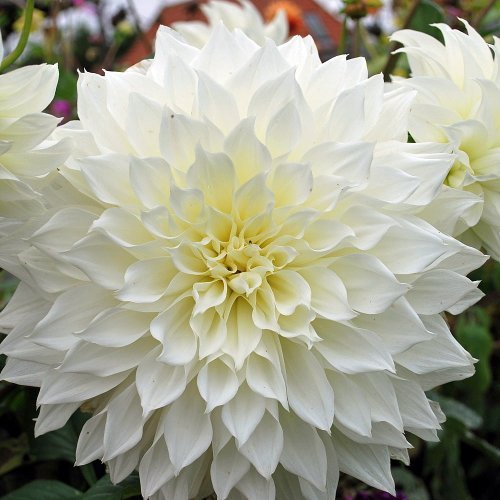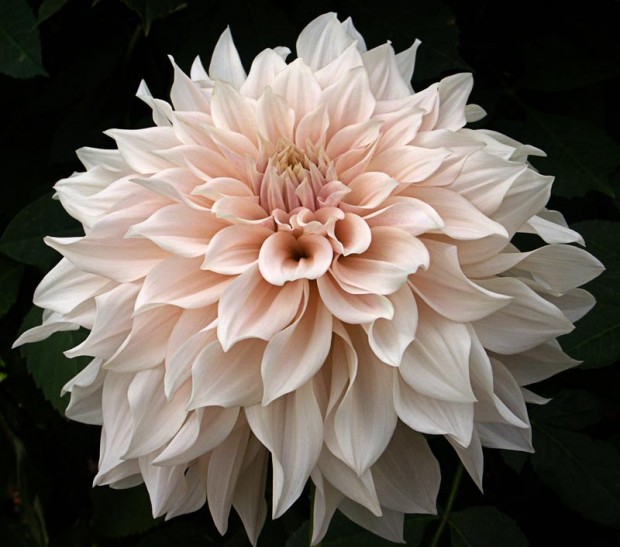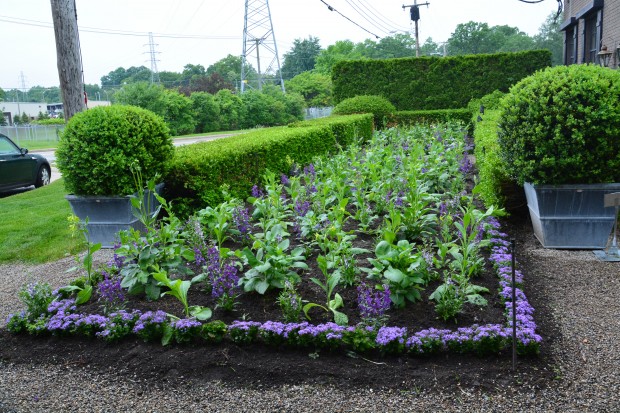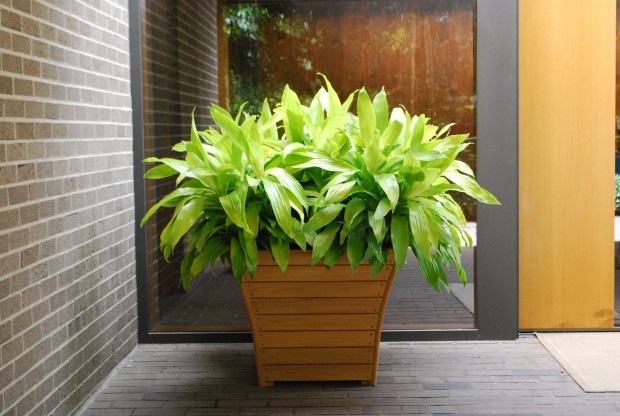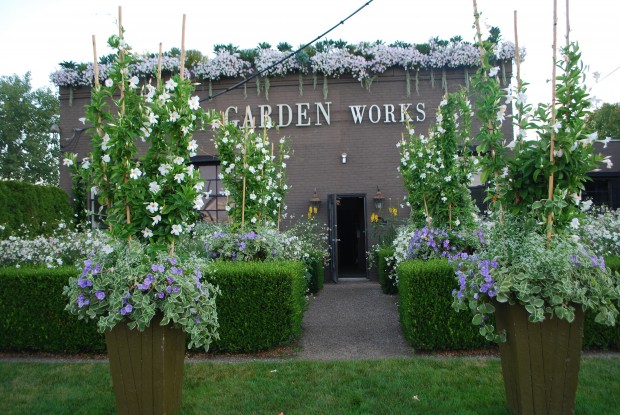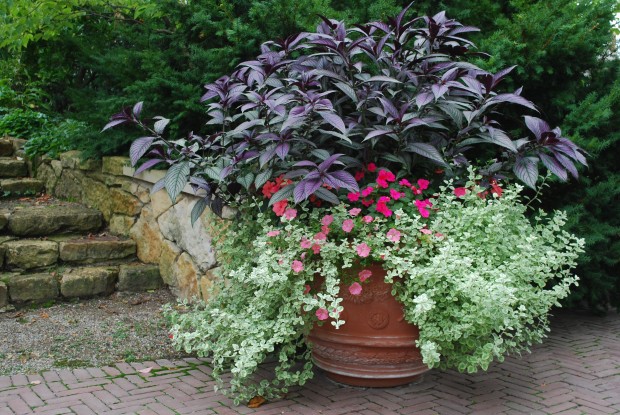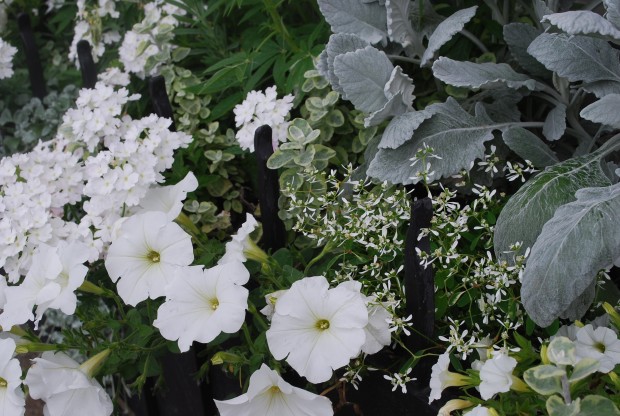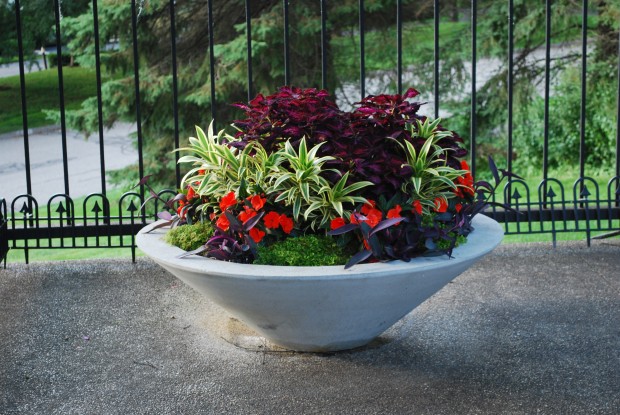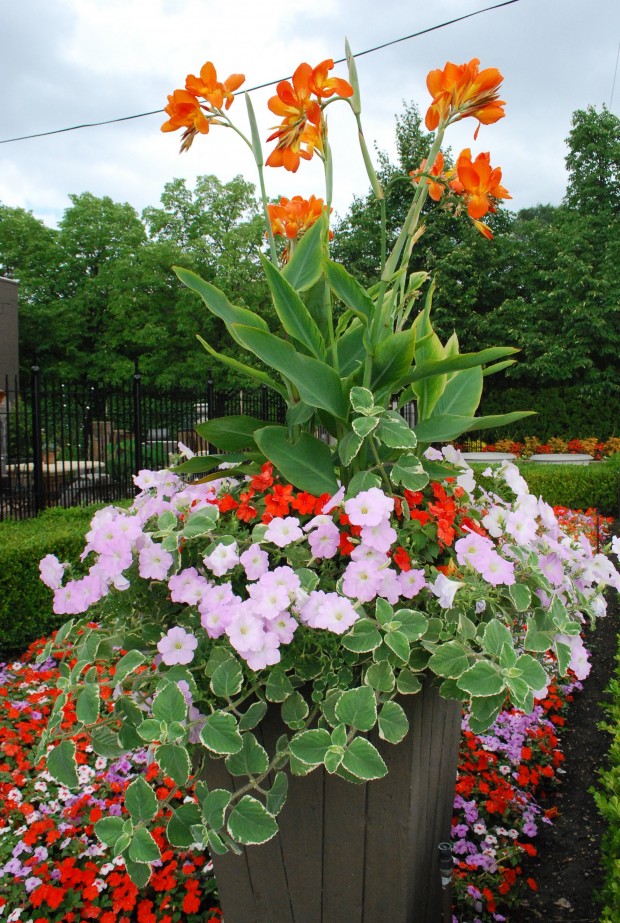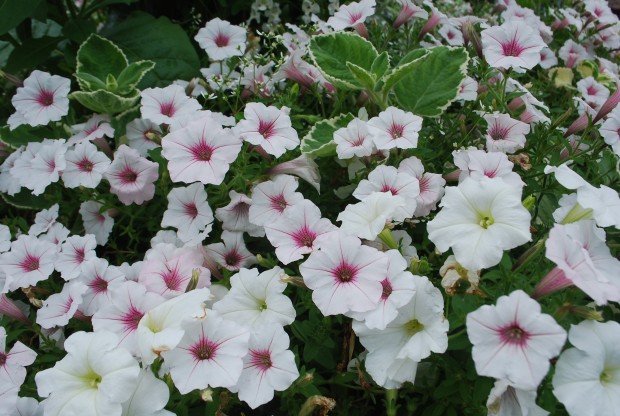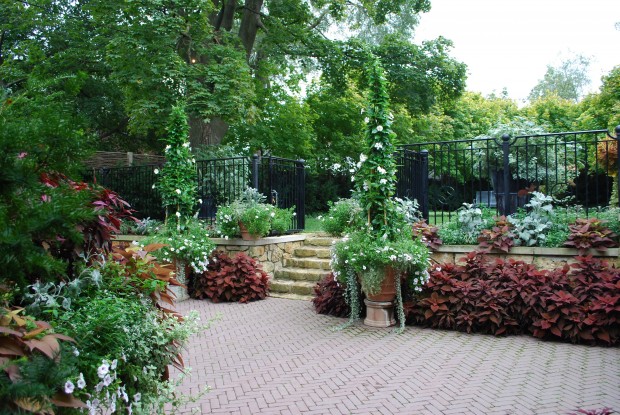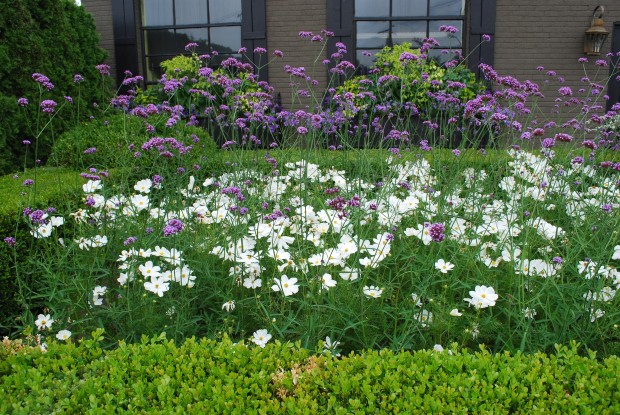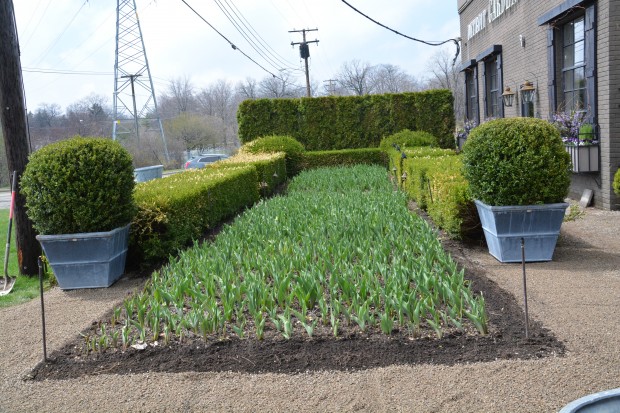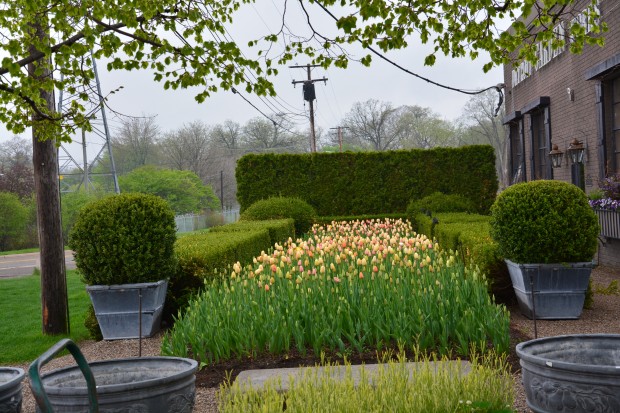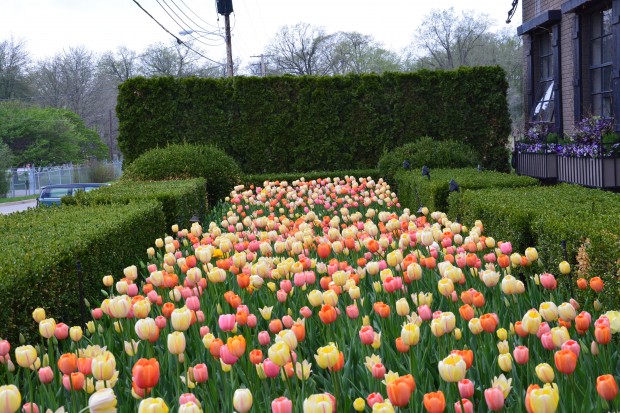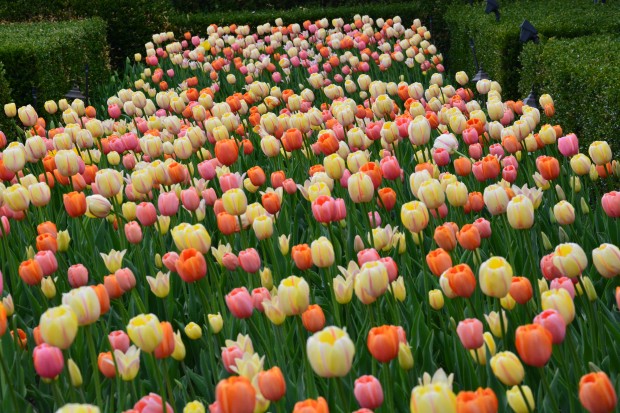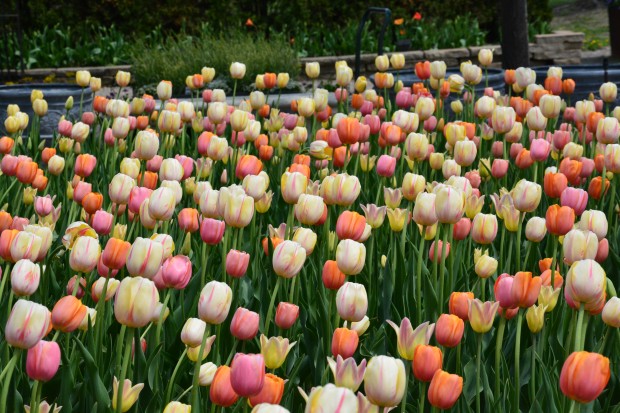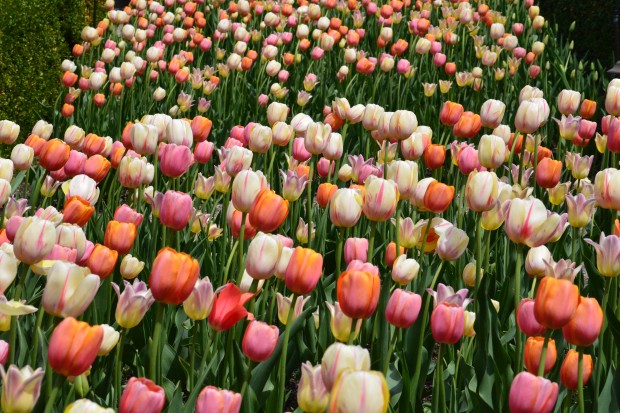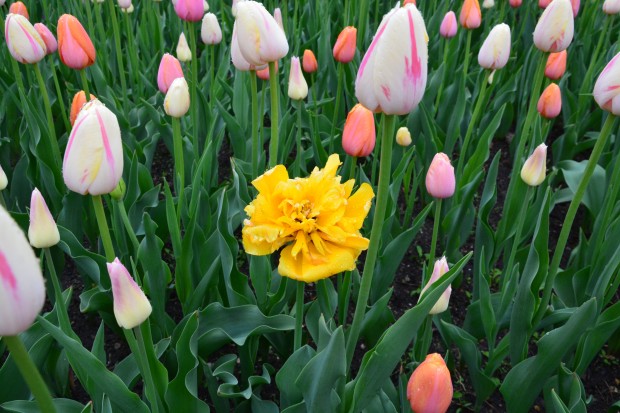 As I am writing this, the temperature outside is 54 degrees. This morning, I woke up to 49 degrees. Why do I think this is news fit to print? A 54 degree daytime temperature is a spring temperature. Should you be thinking that summer has arrived in Michigan, I would ask you to think differently. In my opinion, we are still in the spring season. Opinion aside, there is plenty to suggest that each of the four seasons lasts just about three months. I rarely see any deviation from a spring season that spans late March and April, May, and most of June. The temperature today reminds me that we are in the late stage of spring. The beginning of summer, the summer solstice, arrives on June 21, still a week away. I have other signs that spring is still holding forth. This April planting of mixed colors of nicotiana and violas at the entrance to our driveway is just about peaking. It is astonishingly beautiful and lush.
As I am writing this, the temperature outside is 54 degrees. This morning, I woke up to 49 degrees. Why do I think this is news fit to print? A 54 degree daytime temperature is a spring temperature. Should you be thinking that summer has arrived in Michigan, I would ask you to think differently. In my opinion, we are still in the spring season. Opinion aside, there is plenty to suggest that each of the four seasons lasts just about three months. I rarely see any deviation from a spring season that spans late March and April, May, and most of June. The temperature today reminds me that we are in the late stage of spring. The beginning of summer, the summer solstice, arrives on June 21, still a week away. I have other signs that spring is still holding forth. This April planting of mixed colors of nicotiana and violas at the entrance to our driveway is just about peaking. It is astonishingly beautiful and lush.
 Spring annual planted in April grow and peak the middle of June. I wonder what these early planted nicotiana will do, come summer. How could they be any better? It used to be that no one planted summer annuals before Memorial Day. I see many people planting out annuals Mother’s Day weekend. I do not plant any summer annuals on May 10. Better that all of those tropical annuals have the shelter, sun and heat of a greenhouse in May. Annual plants in my zone like warm soil, warm days, and warm nights. Michigan weather is rarely able to deliver those conditions until the beginning of July.
Spring annual planted in April grow and peak the middle of June. I wonder what these early planted nicotiana will do, come summer. How could they be any better? It used to be that no one planted summer annuals before Memorial Day. I see many people planting out annuals Mother’s Day weekend. I do not plant any summer annuals on May 10. Better that all of those tropical annuals have the shelter, sun and heat of a greenhouse in May. Annual plants in my zone like warm soil, warm days, and warm nights. Michigan weather is rarely able to deliver those conditions until the beginning of July.
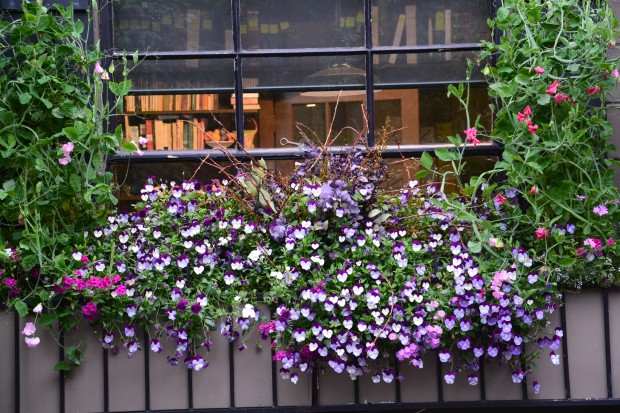 My spring window boxes look great right now. Lovely and lush. Pansies and violas like cool weather-spring weather. Once the heat of our summer comes on, the pansies and violas will fade. As of today, June 14, they are still getting the weather they need.
My spring window boxes look great right now. Lovely and lush. Pansies and violas like cool weather-spring weather. Once the heat of our summer comes on, the pansies and violas will fade. As of today, June 14, they are still getting the weather they need.
 The sweet peas are coming into full bloom. The plants themselves are prety wild, but the flowers are beautiful and fragrant. Having never grown them before, I am happy for the cool weather that suits them.
The sweet peas are coming into full bloom. The plants themselves are prety wild, but the flowers are beautiful and fragrant. Having never grown them before, I am happy for the cool weather that suits them.
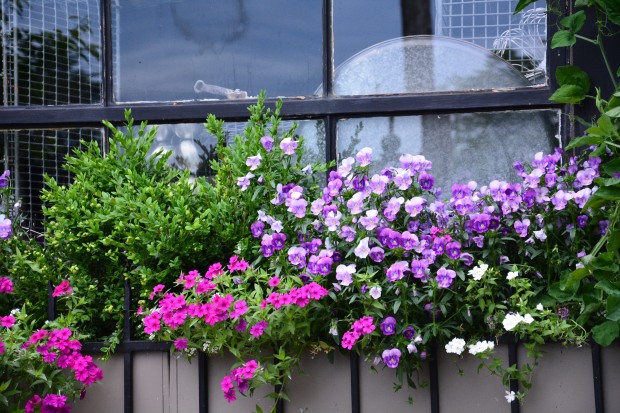 If you did not plant your pots for spring, so be it. Every gardener has a schedule and a mission all their own. I would only point out, on this 55 degree day in June, that the summer season is yet to come. I did get a few of my own pots planted. I hope to have them done by June 21. I know they will take right off, given warm temperatures and warm soil.
If you did not plant your pots for spring, so be it. Every gardener has a schedule and a mission all their own. I would only point out, on this 55 degree day in June, that the summer season is yet to come. I did get a few of my own pots planted. I hope to have them done by June 21. I know they will take right off, given warm temperatures and warm soil.
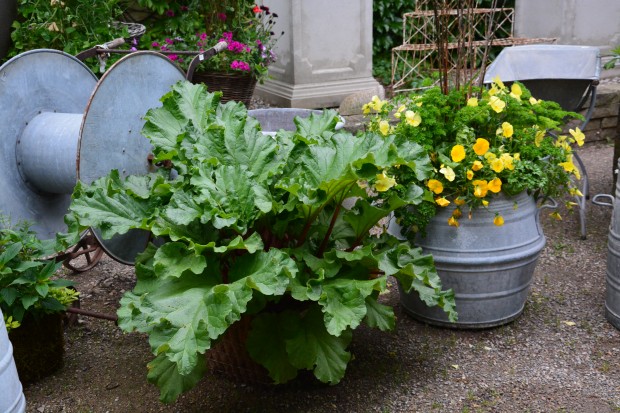 The cool weather plant club is a big one, and includes rhubarb, pansies and parsley.
The cool weather plant club is a big one, and includes rhubarb, pansies and parsley.
 We did plant the front of Detroit Garden Works for summer a few days ago.. No doubt we are anticipating the summer. We cut the dinner plate dahlias back by half. It will take them the summer to get going. They will be at their best in September and October. I have not planted the roof boxes yet-it is still to cold for what I have in mind.
We did plant the front of Detroit Garden Works for summer a few days ago.. No doubt we are anticipating the summer. We cut the dinner plate dahlias back by half. It will take them the summer to get going. They will be at their best in September and October. I have not planted the roof boxes yet-it is still to cold for what I have in mind.
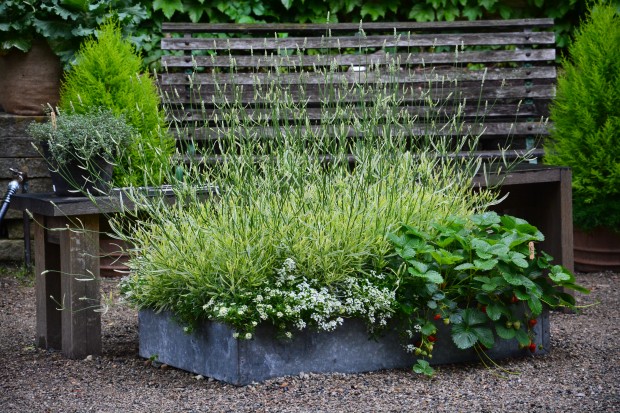 The early summer cannot hold a candle to the peak of the spring season. Think of it. The start of a season is the start. The conclusion of the season can be glorious. I call that the super nova stage. This spring container designed and planted by Rob-exquisite today. The spring gardening season lasts every bit of three months. Into late June. Just saying.
The early summer cannot hold a candle to the peak of the spring season. Think of it. The start of a season is the start. The conclusion of the season can be glorious. I call that the super nova stage. This spring container designed and planted by Rob-exquisite today. The spring gardening season lasts every bit of three months. Into late June. Just saying.
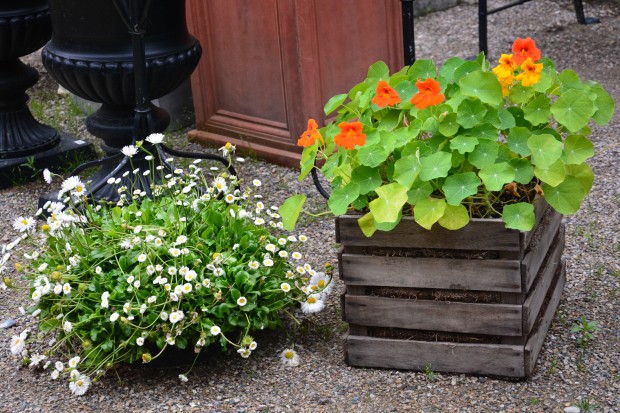
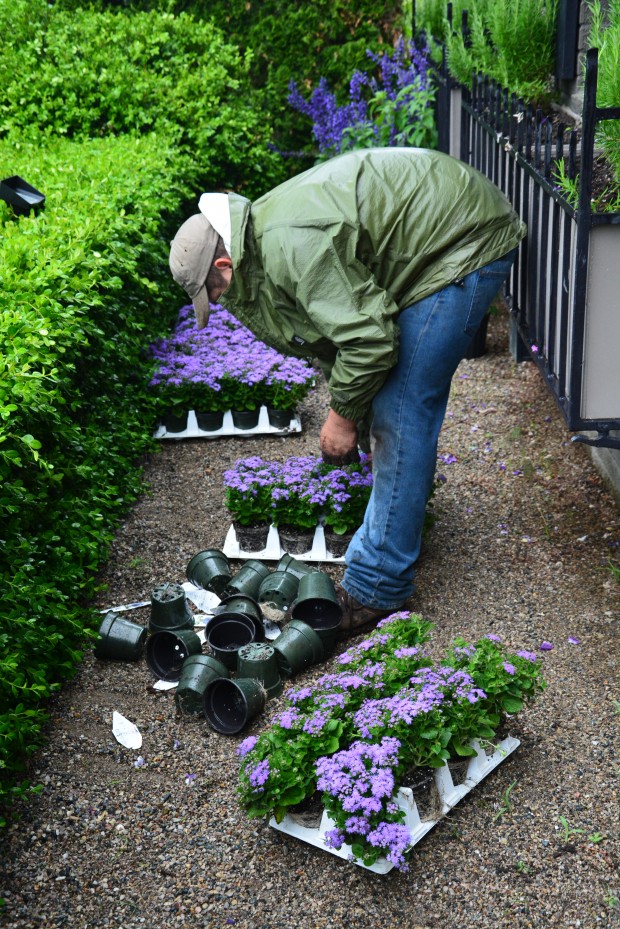
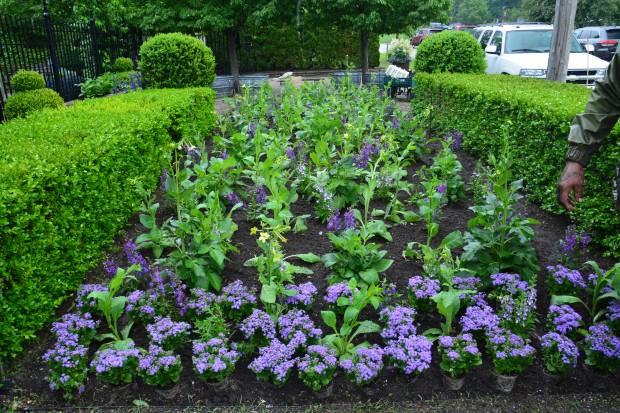 Last year’s scheme was all green. I planted panicum grass inside the boxwood. More than a few customers said it looked like we were going out of business, as we had not cut the grass. Like I say, everyone has a different idea of beautiful. I knew I wanted to do something with purple. The color of this ageratum artist is so luscious. It is a light blue/purple that I call heliotrope blue. Lots of blue with a big dose of lavender. Dark purple has a way of turning dull, if it does not have lively companions. The blue salvia mystic spires has gorgeous blue/purple flowers that are so striking up close. Plant it in a garden, and the color sinks into the background. In the mid and background of this picture, you can barely make out the purple angelonia.
Last year’s scheme was all green. I planted panicum grass inside the boxwood. More than a few customers said it looked like we were going out of business, as we had not cut the grass. Like I say, everyone has a different idea of beautiful. I knew I wanted to do something with purple. The color of this ageratum artist is so luscious. It is a light blue/purple that I call heliotrope blue. Lots of blue with a big dose of lavender. Dark purple has a way of turning dull, if it does not have lively companions. The blue salvia mystic spires has gorgeous blue/purple flowers that are so striking up close. Plant it in a garden, and the color sinks into the background. In the mid and background of this picture, you can barely make out the purple angelonia.

